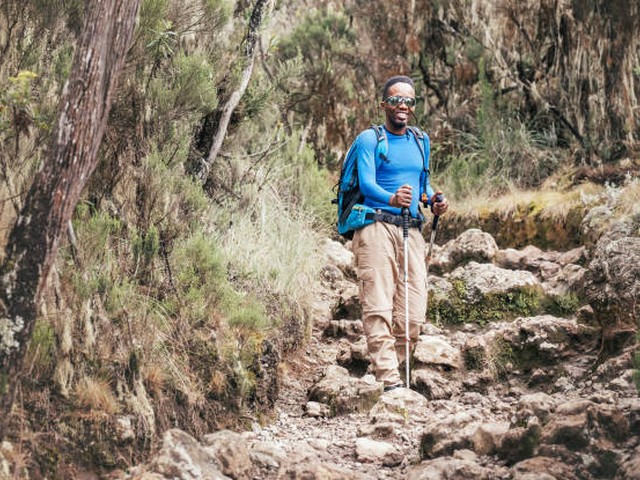How To Prepare For An Eco-Friendly Kilimanjaro Trek
Scaling the majestic heights of Mount Kilimanjaro is a dream for many adventurers around the world. Known as the "Roof of Africa," it invites thousands of trekkers each year who seek to conquer its peaks and experience its unique ecosystems. However, as responsible travelers, it’s crucial to approach such an adventure with sustainability in mind. At the Kilimanjaro Centre for Trekking and Ecotourism (KCTE), we’re committed to guiding you on how to undertake an eco-friendly trek that honors this magnificent mountain while protecting its pristine natural environment. Let’s embark on a journey of discovery on how to prepare for an eco-friendly Kilimanjaro trek.
Why an Eco-Friendly Approach Matters
Mount Kilimanjaro is not just a mountain; it’s a vital ecosystem that supports a diverse range of flora and fauna. An eco-friendly approach to trekking ensures that we minimize our environmental impact and help preserve this natural wonder for future generations. It involves everything from the gear we use to the behaviors we adopt while on the mountain.
Planning Your Eco-Friendly Trek
Choosing the Right Tour Operator
When planning your Kilimanjaro trek, selecting a responsible tour operator is the first crucial step. At KCTE, we pride ourselves on our sustainable practices and deep respect for the local environment and communities. We ensure that all our tours adhere to the highest environmental standards, providing you with peace of mind that your adventure contributes positively to the region.
Best Time to Trek
Timing your trek can also impact the environment. The most popular times to climb Kilimanjaro are during the dry seasons from June to October and from December to March. Trekking during these times minimizes the path erosion and vegetation damage that can occur during wetter months.
Training for Sustainability
Preparing for Kilimanjaro is not just about physical fitness; it’s about understanding how to travel responsibly. Focus on training hikes in your local area where you can practice carrying all your trash with you, sticking to trails, and respecting wildlife and natural resources.
Essential Gear for an Eco-Friendly Trek
Choosing Sustainable Gear
Opt for high-quality, durable trekking gear that can withstand the harsh conditions of Kilimanjaro without needing frequent replacement. Look for brands committed to sustainability through the materials they use and their production processes.
Rent Instead of Buy
Consider renting gear that you may not use again. KCTE offers rental options for essential items like sleeping bags, walking poles, and even high-altitude clothing. Renting not only reduces waste but also ensures that gear is reused and recycled.
Pack Light and Right
Packing light not only makes your trek easier but also reduces the load for porters and the environmental impact. Ensure that every item in your backpack serves a purpose and always choose biodegradable and eco-friendly products whenever possible.
On the Mountain: Practicing Sustainable Trekking
Stick to the Trails
Erosion is a significant issue on popular routes. By sticking to the designated trails, you help prevent further erosion and disturbance to the surrounding habitats.
Water Usage and Waste Management
Water resources on Kilimanjaro are limited. Bring a reusable water bottle and consider a portable water filter or purification tablets to minimize reliance on bottled water. Always pack out what you pack in, including organic waste like fruit peels, as they can take much longer to decompose at high altitudes.
Respect Wildlife and Local Communities
Kilimanjaro is home to various wildlife species and local communities who call the area home. Maintain a safe and respectful distance from animals, and engage with local communities respectfully, valuing their culture and traditions.
After Your Trek: Leaving a Positive Impact
Share Your Experience
Educating others about eco-friendly practices is vital. Share your sustainable trekking experiences and encourage future trekkers to consider their environmental footprint.
Support Conservation Initiatives
Consider contributing to conservation projects that work to preserve Kilimanjaro’s ecosystems. Even small contributions can make a big difference.
Why Book Your Eco-Friendly Trek with KCTE?
At the Kilimanjaro Centre for Trekking and Ecotourism, we don’t just lead treks; we create environmentally conscious adventurers. Booking your climb with KCTE ensures that you’ll have a profound, sustainable, and unforgettable experience on Mount Kilimanjaro.
FAQ: Preparing for an Eco-friendly Kilimanjaro Trek
Q: How physically prepared do I need to be for a Kilimanjaro trek?
A: It’s essential to be in good physical condition. Start training several months in advance, focusing on cardiovascular fitness, strength training, and altitude acclimatization if possible.
Q: What should I do if I see litter on the trail?
A: If it’s safe to do so, pick it up and carry it out. Setting a good example can inspire others to follow suit.
Q: Are there any specific cultural considerations I should be aware of?
A: Yes, respecting local customs and traditions is crucial. This includes dressing appropriately, asking for permission before taking photos of locals, and supporting local businesses whenever possible.
Conclusion
Preparing for an eco-friendly trek to Kilimanjaro is a fulfilling endeavor that enhances your experience and protects the mountain’s delicate ecosystem. By choosing KCTE, you align yourself with a team that prioritizes sustainability and offers a trekking experience that is as responsible as it is thrilling. Ready to embark on your adventure? Contact Kilimanjaro Centre for Trekking and Ecotourism today, and take the first step towards an unforgettable and conscious journey to the peak of Kilimanjaro.




